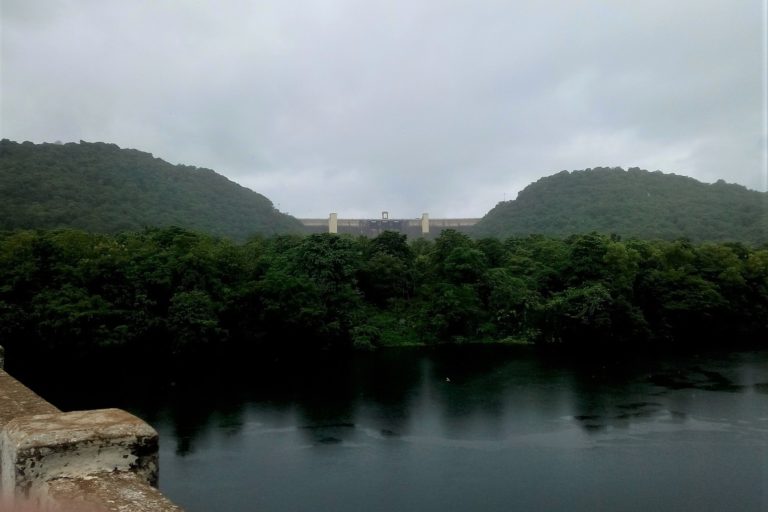- Ajit Maneshwar Naik, a 57-year-old environmental activist who fought against the construction of new dams on the Kali River in the state of Karnataka in India, was killed last month.
- India has one of the highest rates of murders of environmental activists in the world, with 16 activists killed in 2016, up from six in 2015, according to a recent report.
- The city of Dandeli, where Naik worked, is especially notorious for crimes against environmental activists.
Ajit Maneshwar Naik, a 57-year-old environmental activist, was killed last month in Dandeli, a city on the banks of the Kali River, in the Indian state of Karnataka. He is survived by his wife and two sons.
The Kali, at just 184 kilometers (114 miles) long, may not have the aura of the mighty Narmada or the political significance of the Kaveri. But with six dams, and a seventh one proposed, the Kali could soon cease to exist. Naik, who was also a Right to Information activist (similar to the Freedom of Information Act in the U.S.), fought against both the dam, and a corrupt, opaque system. Emerging successful after stopping the seventh dam to be built, he continued to fight for environmental justice. But he paid the price for it — with his life.
On July 27 this year, after finishing work, Naik was heading to his car when a masked assailant attacked him with a sword. Passersby took him to a nearby hospital, where he was declared dead on arrival.
The Dandeli police have arrested three men in connection with the attack, which they suspect was motivated by a property dispute. Asked whether environmental activists were under threat, police official Ullas Pariwar said: “I cannot comment on these issues and tell that the place is unsafe because I am a police officer.”

A friend and fellow activist, Hemantha Naik, said Naik was also a prominent local politician in Dandeli, but came up short at the state level.
“He contested MLA elections [state assembly elections] in 2006 but lost,” Hemantha Naik said. “Since then, he was a full-time activist taking on the local mafia and protesting against several environmental issues, particularly against effluents being dumped into the Kali river by paper mills in the area.”
Naik’s friends and fellow activists have petitioned the chief minister of Karnataka, H.D. Kumaraswamy, to set up a joint legislative committee that will oversee the ongoing investigation into the murder, as well ensure an end to the “cycle of violence” in Dandeli.
A map locating Dandeli on the Kali River. Map from Google.

“Various powerful forces are behind the ongoing destruction of this ecologically fragile and socially diverse district and we believe their brazen and illegal operations are the direct outcome of a colossal failure in governance and the rule of law,” Leo Saldanha, an environmental lawyer and a trustee at the Environmental Support Group, an NGO that fights for environmental justice, wrote in his petition that urges fellow activists to sign.
Speaking to Mongabay-India, Saldanha said Naik was working in one of the most dangerous areas in the country for an environmental activist.
“A judicial probe of the murder will look at it as a one-off crime and the murderer might be booked,” he said. “But Dandeli is known for its violence. And that is why we want a Joint Legislative Committee that will investigate the roles of politicians and we can demand answers to development in the region.
“Dandeli is so known for notoriety that even big environmental NGOs were scared to work there. Ajit worked there alone,” Saldanha added.
Naik’s biggest achievement, according to Saldanha, was that he kept the murmur of protests alive for so long. “In smaller towns, it is difficult to mobilize people and bring out a consensus on important environmental issues. He kept it alive for so many years, and not just for a few banner events or protests,” he said.
— Leo Saldanha (@leofsaldanha) August 14, 2018
Hemantha Naik said Dandeli was fraught with violence. Describing his own experience, he said he was once physically assaulted and four to five men barged into his house knowing that he was working against their interests. “In fear, I moved my son out of Dandeli,” he said.
After the proposal of a seventh dam to be built on the Kali River, the biggest environmental threat to the region was the dumping of untreated effluent from paper mills. “Our studies show that heavy metal levels in the rice fields were much higher than threshold levels. Recently, 18 cows were found dead. On post-mortem, it was found that their stomachs were filled with paper pulp,” Hemantha Naik said.
This latest killing has drawn comparisons to the 2012 murder of Madan Nayak, an assistant forest conservator in the area. Media reports suggested Nayak was killed during an altercation with tourists, when he tried to stop one of them from feeding meat to crocodiles in the Kali at the Dandeli crocodile park. The incident highlighted the forest department’s inability to control the number of illegal visitors as well as the mushrooming of illegal resorts and homestays in the forests.
India has one of the highest murder rates of environmental activists in the world. Sixteen activists were killed in the country in 2016, up from six in 2015, according to the “Defenders of the Earth” report by the international NGO Global Witness. Brazil topped the list that year, with 57 environmental defenders killed; India was fourth.
“India has seen killings spike against a backdrop of heavy-handed policing and the repression of peaceful protests and civic activism,” read the report.

This story was first published on Aug. 16, 2018, by Mongabay-India.